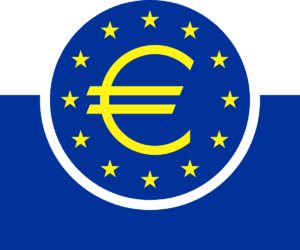The European Union (EU) consist of the following 27 member states:
- Austria
- Belgium
- Bulgaria
- Croatia
- Cyprus
- Czech Republic
- Denmark
- Estonia
- Finland
- France
- Germany
- Greece
- Hungary
- Ireland
- Italy
- Latvia
- Lithuania
- Luxembourg
- Malta
- Netherlands
- Poland
- Portugal
- Romania
- Slovakia
- Slovenia
- Spain
- Sweden
History of the European Union
The European Union (EU) traces back its origin to the aftermath of WOII. Countries wanted to foster economic growth and collaboration amongst each other. The idea was when countries would depend more upon each other economically the chances of another conflict would go down. This idea resulted in the formation of the European Economic Community (EEC) in 1958. The EEC consisted of six countries: Belgium, Germany, France, Italy, Luxembourg and the Netherlands.
In the years after 22 more countries joined the EEC resulting in a huge single market. The idea of the EEC also evolved past an economic focus. The countries started to work together on climate issues, health, security and external relation. This led to the countries deciding that a name change was in order. In 1993 the still 28 Member States said goodbye to the EEC and the European Union was born.
BREXIT
Today the European Union (EU) consist of 27 Member States. Yes, 28 in the above was not a typo. In 2016 the United Kingdom (UK) voted to leave the EU in a referendum. 4 years later, at the beginning of 2020, the UK formally left the EU. This event became known as Brexit (Britain Exit).
The European Union today
Today, the 27 Member States work together on almost all aspects of daily life. You can think of finance, academia, environmental issues, health care, security, trade, fishing, farming and more. The only mainly untouched topic is taxation. Taxes are mainly dealt with on a national level. Unless there are signs of discrimination. The EU would not tolerate that a Member State would tax its citizens less compared to other EU citizens. All this is to make sure that the single market principle is upheld.
The EU is based on the rule of law. This means that every decision that the EU makes and every directive or regulation it issues must find its legal basis in one of the treaties of the EU. The treaties are lengthy legal documents that have been democratically approved by all Member States. If the EU cannot find a legal basis for a decision in one of the treaties, the decision is invalid.
Decision-making at EU level involves various European institutions, in particular:
- the European Parliament,
- the European Council,
- the Council of the European Union (Council), and
- the European Commission.
Commonly, the European Commission is the one that proposes new laws. The European Parliament and Council will study the proposals and adopt them if they agree. When a law is adopted it’s up to the Member States to implement the laws into their legal system.
If you would like to learn more about the ins and outs of the functioning of the EU, have a look here: The European Union. What it is and what it does.
The European Union and Crypto
Today (2022), the European Union (EU) plays a minor role in the crypto-industry of the EU. The main role it currently plays is true to a law called the Anti-Money Laundering Directive (AMLD). Currently, the 5th AMLD is adopted across the EU and this version contains rules for Crypto-Asset Service Providers (CASPs). CASPs that offer services related to exchanging fiat money to cryptocurrencies and back and CASPs that offer custodial wallet services are obligated to keep track of all transactions that they process. This is part of the EU’s efforts against money laundering and terrorist financing.
However, the role of the EU concerning the crypto-industry of the EU is going to change rather significantly. The EU is currently working a the Market in Crypto-Assets (MiCA) regulations. MiCA is described as a landmark bill that will help keep investors safe. Based on the current planning, it should be adopted in 2024.


